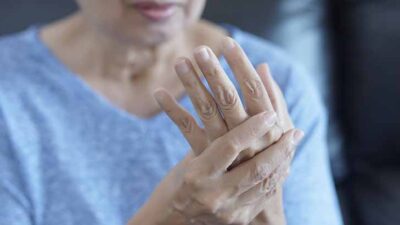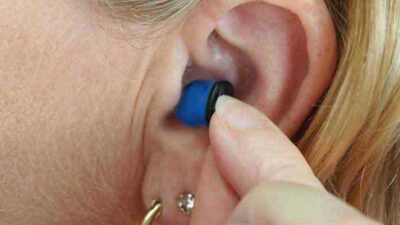Rheumatoid Arthritis (RA) is an auto immune disorder that is characterized by acute inflammation of the joints. Auto immune means that the body’s defence system – which defends the body against infections from bacteria and viruses – turns against the body by mistake. The immediate response of the body is inflammation that is concentrated around joints and can affect other organs like the heart. Diagnosing RA early makes it possible to prevent joint and organ destruction. There are about 1.5 million people suffering from RA in the U.s today. The number of women is three times that of men.
Signs and Symptoms of Rheumatoid Arthritis
RA arthritis patients experience the symptoms in varied ways. Some will have inactive periods and this time few or no symptoms are noticed. Others will experience long periods of symptoms spanning across several months.
1. Pain
Throbbing pain in the joints is a common characteristic. It is highest when you wake up in the morning or after a long period of rest.
2. Swelling
RA affects the lining of the joints and causes inflammation. The inflamed lining can then swell.
3. Stiffness
Just like pain, stiffness of joints is experienced after long periods of rest. The ability of the joints to stretch or fold fully is limited. If your hands are affected, you may be unable to fully clench your fist. Unlike the stiffness experienced by osteoarthritis patients which disappears after a few minutes, with rheumatoid arthritis, it stays longer
4. Malaise (Feeling Ill)
So many areas of the body are affected and this leads to generalized inflammation. With this happening, you will tend to feel generally ill.
5. Loss of Appetite
You may experience a drop in appetite which can lead to subsequent loss of body weight.
6. Muscle Aches
The ligaments and tendons joining the muscles to the joint stretch and weaken causing the muscles to ache.
7. Specific Joints Affected
Although almost any joint of the body can be affected, rheumatoid arthritis seems to target the hands in most cases. Other joints include that of the neck, knees, shoulders, feet and hips. However, affected joints can be treated with the use of joint pain supplements like Theraworx Relief.
8. Fatigue
A feeling of tiredness may be evident even when you have not been involved in a tiring chore.

9. Fluid Build-up
The inflammation of the joint lining (synovium) causes the production of excess joint fluid (synovial fluid) which in turn builds up in the joint which later thicken due to inflammation ( synovitis).
10. Nodules
They appear as bumps under the skin lining which can be painful at times
11. Redness and Warmth
Due to inflammation of the joint lining, it becomes sore from inside, the skin turns red and warm to touch
12. Symptoms in Children
It is called Juvenile Rheumatoid Arthritis. It affects children under 17 and over 50,000 children in the U.S have this condition. Some outgrow it while others live with it for the rest of their lives. Symptoms include:
- Pain The child may not complain but you will notice that they limp in the morning or after a daytime nap.
- Joint Swelling It is common and the larger joints like the knee will be noticed first.
- Stiffness The child will tend to get clumsy when they wake up and they might be unable to grip something firmly because of the stiffness.
What Causes Rheumatoid Arthritis?
1. Genetic (Inherited) Factors
A 2013 online study named Arthritis and Rheumatism showed that 60 percent chance of a person’s ability to get RA is dependent on genes. Genetic markers associated with RA in a person do not cause it but rather determine the extent of severity of the disease or their response to medication.
2. Environmental Factors
Up to date, no single organism has been associated with the trigger of RA. However, Excessive antibodies known to react with coli-an intestinal bacterium have been found in some patients’ synovial fluid. This may act to lengthen the RA period as some researchers think.
3. Other Factors
Your lifestyle can increase the chances of getting RA. People who smoke, consume lots of red meat or take a lot of coffee have been associated with the condition in most cases.
Types of Rheumatoid Arthritis
1. Hand and Finger RA
The wrist and finger joints are targeted by RA. These joints get inflamed, painful, swollen and warm to touch. They become stiff and clenching the fist may be difficult.
2. Knee RA
With knee RA, the joint becomes inflamed, warm and swollen. As inflammation of the joint lining occurs, the synovial fluid ends up thickening and affecting the cartilage and the bone beneath. The pain in knee RA is more severe than that of Osteoarthritis.
3. Hip RA
The hip is a larger joint and is also targeted by RA. The symptoms will be noticed later after those of the smaller joints. The hip joint swells, becomes stiff, painful and discomfort is experienced around it and the groin. These symptoms happen over a period of time or just suddenly.
Who Has Rheumatoid Arthritis?
RA affects people across the globe irrespective of race or gender. However, it’s common among people between the age of 30 and 60. It is prevalent among women than men.
What Happens In Rheumatoid Arthritis?
In RA, the white blood cells that are supposed to protect the body against infections attack your body’s immune system by mistake. This leads to subsequent changed which makes the joint to get inflamed.
How Does Rheumatoid Arthritis Damage The Joints?
Immune system cells attack and damage cartilage and bone. In response to the attack and with a purpose to heal back, the bone and cartilage cells divide and grow back to heal the wound. The newly formed tissue is usually malformed and unable to function like the original joint.
How RA Affects the Body?
Apart from the swelling, pain and stiffness attached to RA, the effects can extend to other parts of the body. The therapies and drugs used exhibit side effects and some can lead to chronic organ damage.
How Rheumatoid Arthritis May Affect Your Pregnancy?
During pregnancy, the immune system of many women gets suppressed (inactive) to stop the body from recognizing the baby as foreign. Some however experience flare-us as usual and medication should be taken under a doctor’s supervision.
Risk Factors
1. Gender
Women are more susceptible to getting RA as opposed to men. It is estimated that .
2. Age
Although children suffer RA, the onset of the disease is common to people between 30- and 50 years of age.
3. Smoking
Heavy smokers stand high chances of getting the disease even when it does not run in their blood line.
4. Family History
Genes that make you at risk of getting RA may be acquired from your family. These genes do not cause RA but rather increase the chances of you getting the disease.
Complications
Chronic inflammation in RA leads to other complications due to damage caused in other body organs. They may differ from patient to patient depending on the organs involved.
1. Osteoporosis
Osteoporosis is a condition that causes the erosion of the bone and its density is lost. Women in postmenopausal who suffer RA usually get osteoporosis. The hip is a common target. With men, those above 60 years of age have it in numbers above average.
2. Heart Problems
The risk of heart and circulatory diseases increases with presence of RA. Patients are likely to develop heart attack, coronary heart disease, stroke and atrial fibrillation. They also risk getting Venous Thromboembolism whereby blood clots form in the veins.
3. Lung Disease
RA patients stand the risk of getting serious lung diseases. These may include intestinal fibrosis and pulmonary hypertension. It is also possible that the drugs used to treat RA increase the risk.
4. Carpal Tunnel Syndrome
The carpal tunnel runs through a narrow space sandwiched between bones and ligaments from the fore arm to the hand. Tendons run alongside it. Due to RA, the lining of these tendons swell prompting Carpal Tunnel Syndrome.
Diagnosis
It can be challenging to diagnose RA because so many other complications mimic the same symptoms. Tests on blood or x-rays may give normal results even when your pain begun months ago. Some evident diagnostic signs may include stiffness of joints in the morning, nodules under the skin, changes occurring in x-rays and a positively identified rheumatic factor in your blood.
How Is Rheumatoid Arthritis Treated?
1. Surgery
This is an option that some patients will find as a great relief to pain. There are different techniques used on different joints to improve functionality. Your physician will advise n the technique that best suits you.
2. Therapy
A therapist will assist you in exercising to improve flexibility. He can also advise on ways to minimise pain as you do your daily chores. Opting for devices that are assistive will make it better, for instance, choosing button hooks over normal buttons.
3. Medications
There are many drugs used today for the treatment of RA. Though a cure is not yet found, these drugs work in your body to check inflammation, pain and slow the process of joint and organ damage. Jointxl Plus is a supplement that effectively treats RA. Its powerful combination of compounds makes it stand out with the ability to relief pain, lubricate the joint and restore its normal function.
4. Alternative Treatments
There are alternative treatments that respond well to RA. Some include
- Plant Oils – A fatty acid contained in the seeds of evening primrose, black currant and borage have shown the ability to counter pain and stiffness in joints.
- Fish Oil – Supplements that contain fish oil are great too. They have the ability to interfere with prescribed drugs so check with your physician first.
- Tai Chi – This is a therapy involving gentle exercises that work to relive stress. Ensure the exercises do not cause pain when you do them.
Prevention
As there is no known cause of RA, preventing it can be tricky. However, avoiding/quitting possible risks like smoking is beneficial. If symptoms are sensed, seek medical attention early enough as this prevents the progression of the disease and possible joint and organ damage.
Dig into EasyFlex Review – The supplement designed to improve joint health.
Conclusion
When treated effectively, you can live a comfortable life with RA. The variations of the disease in terms of severity and how your body responds to treatment will determine that.
You May Also Like – Relation Between Biologics & Cancer In Rheumatoid Arthritis Patients







 This article changed my life!
This article changed my life! This article was informative.
This article was informative. I have a medical question.
I have a medical question.
 This article contains incorrect information.
This article contains incorrect information. This article doesn’t have the information I’m looking for.
This article doesn’t have the information I’m looking for.